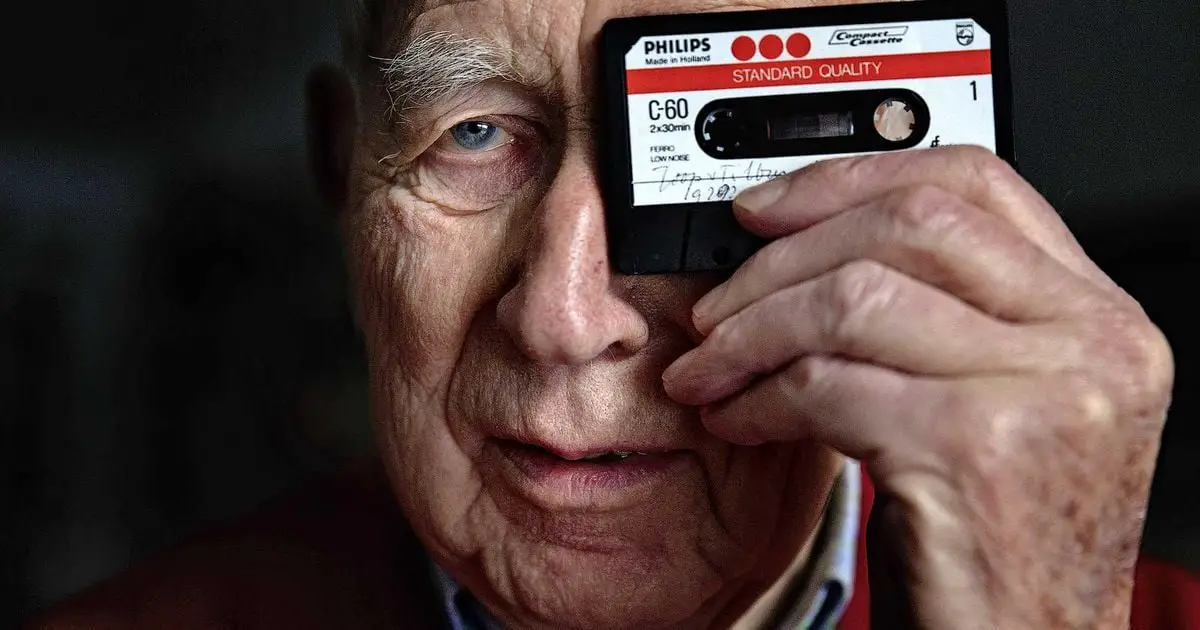Lou Ottens, who worked throughout his career at Philips on projects such as the cassette tape and Compact Disc, passed away last week.
The cassette tape was the format that popularized the enjoyment of music, both among the upper and lower classes; Unlike vinyl records and other similar formats, the cassette tape was cheap, very versatile, and fit in your pocket.
The genius behind this invention was none other than Lou Ottens, a Dutch engineer who throughout his career worked with Philips to develop sound-related products. It was in the early 1960s that he devised the product for which he is most recognized, the cassette tape that has come back and is still being sold. Even Bluetooth cassette players are sold to get that signature sound.
This week’s news broke of Ottens’ death at the age of 94; He leaves behind a gigantic legacy that goes beyond even the cassette, although he was always humble about his creations, preferring always to keep working without looking back.
Lou Ottens, the creator of the cassette dies at age 94
Like many inventions, the cassette was born in response to frustration; Specifically, Ottens was annoyed with the giant tape recorders. Indeed, the idea of using magnetic tape to record data and sound was not exactly new, but it was not a format exactly suited to the home. Businesses were the main users of such devices.
Ottens had the idea of taking the tape and adapting it to a smaller, easier-to-use format, something that even someone without advanced knowledge could use. The result was a small plastic container, which housed a tape that was read and recorded through a small opening on one side.
Ottens’ genius lay in the size, which not only allowed easy transport of tapes, but also the creation of very small playback devices. This not only made transport and distribution cheaper but also made it easier to use.

Something that was demonstrated when the first portable cassette players like the Sony Walkman arrived, which made it possible to listen to music anywhere and not only in the room where the player was installed.
But the use of magnetic tape was also a stroke of genius since it had a feature that other formats did not have: it could be recorded. The influence of Ottens’ invention is not only noticeable in the distribution of music, but also in its creation.
Countless musicians who dominate the charts began by recording their songs on a tape, probably already used, writing the name in pen and sharing it with their friends. The cassette tape became a symbol of indie and alternative music.
But a cassette tape can store not only sound but also data. Machines like the ZX Spectrum could read programs and games stored on these tapes and run them in memory; A process that was long and tedious, but worthwhile in the end.
He is one of the co-creators of the CD format as well
The next innovation Ottens worked on had that in common: The CD or Compact Disc. In this case, Ottens’ work was with a larger team of engineers, and so it is not usually associated with him as much, but it says a lot about his clout both at Philips and in the industry in general.
It was inevitable that the CD was the only format that managed to take the throne away from the cassette, in the face of alternatives such as mini-discs. Not only did it allow for lossless music recording, but the 650MB of storage on CD-ROMs allowed for an immense amount of data to be stored for the time; Something that served as the basis for the multimedia revolution that computers underwent in the 1990s.
Whether it was his work with the cassette, the CD, or both, Lou Ottens was a huge influence on the technology industry for decades.





